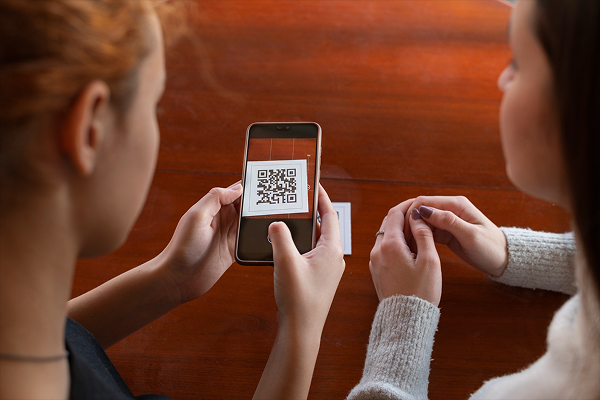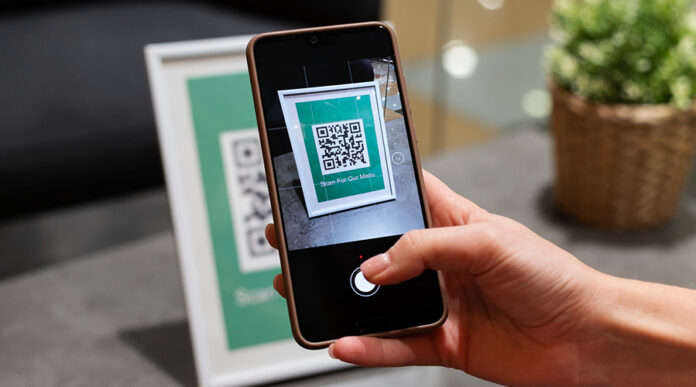QR (Quick Response) codes, also known as two-dimensional barcodes, are becoming a staple in modern life. You use them for accessing restaurant menus, connecting to Wi-Fi networks, making payments, and more.
Yet, these codes are highly beneficial and provide a seamless experience; however, they are also associated with some risks. In this blog post, we will walk you through these risks and introduce an innovative solution to address them.
The Rise of QR Codes
QR codes gained their true popularity during the COVID-19 pandemic when contactless payments and checkouts were in high demand. The reason is that they can easily be scanned using a smartphone camera. Today, you find QR codes on:
- Restaurant tables for digital menus
- Posters and flyers for the event check-in
- Business cards linking to LinkedIn profiles
- Product packaging with instructional videos
- Public transport for ticket verification
- Payment systems like WeChat Pay, PayPal, and Venmo
With built-in QR scanning capabilities in most smartphones, you don’t need third-party apps. Just open the camera, scan, and go. While this ease of use is convenient, it’s also where the risks begin.
What Most People Don’t Realize About QR Codes?
QR codes are containers of data, mostly URLs. Anyone can generate a QR code with the help of online tools. Just because it looks cleanly printed on a sticker, menu, or flyer doesn’t mean it’s trustworthy.
Many of today’s devices offer a built-in scanning feature. Some of them reveal the information upon scanning and allow the user to take the action. However, there are some that, upon scanning, take direct action. They do not reveal where the code will lead.
This is what most people don’t realize about QR codes. Behind these codes can be malicious links or things that can introduce malware to your device and put your personal information at risk.
Hidden Risks Behind Scanning QR Codes

Below are some of the hidden risks associated with scanning QR codes directly.
1. Phishing Attacks
Cybercriminals can utilize QR codes to redirect users to fake websites. These websites mimic the real ones, such as your bank, payment platforms, or shopping platforms.
Once you land on a fake page, you will be asked to log in or enter your credit card details. These details are then used to conduct unauthorized transactions.
2. Malware Downloads
Cybercriminals also use QR codes to introduce malware files onto your device. Scanning such a code results in the silent downloading of files that spy on your device. They steal passwords and can even access all the information on your devices, including photos, messages, and more.
3. Data Harvesting & Tracking
Some QR codes are not designed to harm directly, but rather to track user behavior. They are often referred to as dynamic QR codes.
These codes usually embed tracking URLs, logging your location, device type, and even the time you scanned the code. This data is then used for aggressive marketing or even sold to third parties.
4. Wi-Fi Credential Theft
Specific QR codes contain Wi-Fi network credentials. Scanning them automatically connects your device to a Wi-Fi network.
If that network is malicious, attackers can perform attacks such as a man-in-the-middle (MITM) attack. They can monitor your activity and intercept sensitive data in real-time.
Why Built-in Mobile Scanners Can Be Risky?
Smartphones are designed for convenience, not caution. Built-in scanners immediately process the QR code’s command. They proceed without displaying the full URL or information (although not all do; some now display the information). Even many popular phones with advanced features may not offer adequate transparency during scanning. If your device scanner fails to reveal the information and takes direct action, be aware that it is creating a perfect environment for exploitation.
If your device scanner fails to reveal the information and takes direct action, be aware that it is creating a perfect environment for exploitation.
This lack of transparency puts your data at risk. Especially when scanning unfamiliar or unverified codes in public spaces.
So, Is There a Safer Way?
Yes, there is a safer way – Online QR Code Scanners. When you upload or scan a code using an online QR code scanner, it will not instantly execute. Instead, it will display the information embedded within the code. No matter whether it’s an image, a URL, or just simple text.
Why We Think It’s Safer?
We think using an online QR scanner to decode QR codes is safer because:
- You get a clear preview of the information inside the code.
- You get URLs in front of you, making it easy to validate them before clicking.
- No risk of automatic downloading, installation, or redirects.
Wrapping Up
There is no doubt that QR codes are fast and provide a convenient experience for various tasks. But they are not always safe. There are some risks associated with them, as discussed in this blog post above.
However, by using online QR code scanners, you can avoid these risks. They first decode the information inside and provide you with a preview. The rest depends on you whether to proceed or not.

